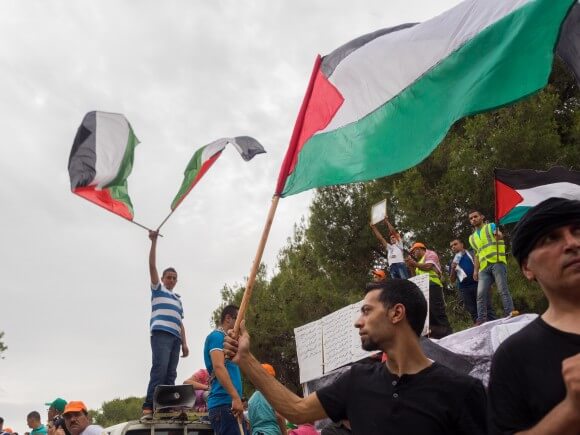
While Israelis flocked to parks to celebrate their Independence Day, Palestinians living inside Israel commemorated Nakba Day at the site of the village of Lubya, near the northern city of Tiberias in the Galilee.
Lubya was one of more than 500 Palestinian villages ethnically cleansed by Jewish militias in 1948 to make way for the founding of Israel. An annual event for the last 17 years, the March of Return was organized by various Palestinian groups and brought an estimated 10,000 Palestinians to commemorate their dispossession.
Since the expulsion of more than 2,700 Palestinians from Lubya, Israel created the Golani Industrial Area as well as the towns of Givat Avni and Lavi (the hebraized version of the village’s original name).
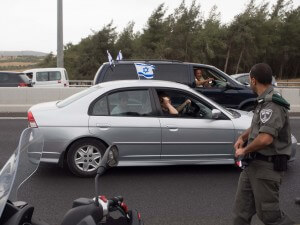
Hundreds of Palestinian cars displaying flags slowly crawled along the highway toward Lubya while Israeli vehicles headed to Independence Day celebrations waved their respective flags. As traffic came to a standstill, many busloads of Palestinians exited and walked along the shoulder of the highway toward the march. A large group of Israelis in a nearby park gathered along the highway, waving flags, singing songs, and shouting “Death to Arabs!”
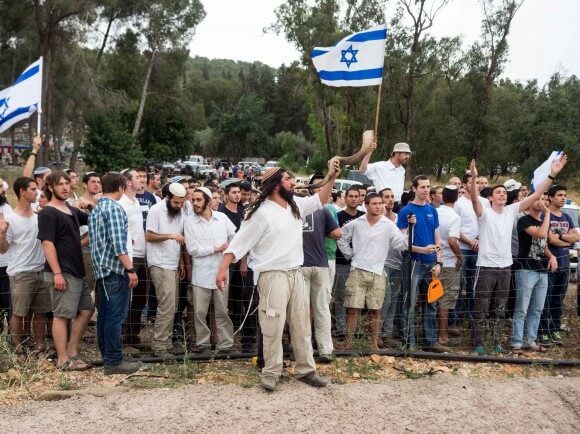
Indifferent to the racist and violent chants, Israeli Police equipped with riot gear confiscated Palestinian flags from vehicles stuck in traffic. Cheers erupted from the crowd of Israelis as a policeman confiscated a Palestinian flag from an elderly woman in the passenger seat of a van. There were several reports of similar incidents.
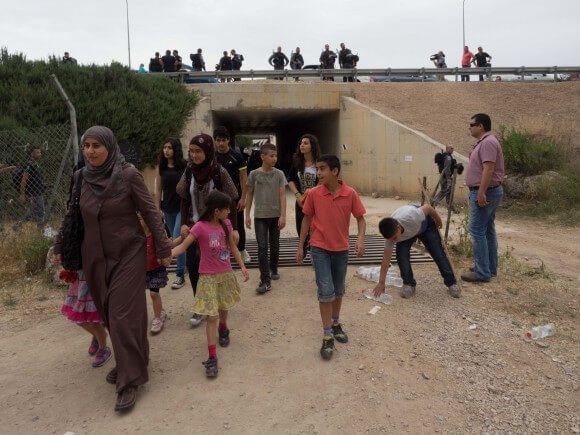
Palestinians hiked up a dusty trail through a forest to an open area. Along the path, multi-generational portraits of refugees from Lubya were hung between trees as part of an art installation.

The crowd slowly built while an Israeli police helicopter circled in the air above. Palestinians of all ages waved hundreds of flags and sang national songs. A moment of silence was held for the depopulated villages before prominent speakers took the stage to address the crowd.
Samer Issawi, the iconic Palestinian hunger striker who was released from Israeli prison in December 2013, spoke about the prisoners struggle and the futility of negotiations. Mohammed Barakeh, a member of the Knesset for the Hadash party, spoke as well about the right of return.

The Israeli historian and author Ilan Pappe attended, and explained his presence to me:
“I think it’s important that the progressive Jewish voice will be represented in what is the heart of the issue in Palestine: the refugee problem. We support the Palestinian internal refugees, which are off the radar and whose right to return should be the first right to be respected if we ever want reconciliation. So I came to salute them, to support them and call on other Jews to join me in this solidarity. Some Palestinian friends who have never heard me before said, ‘I didn’t think I would come to live to a day that they would hear a Jew speak like this.’”
I spoke to Tarek Barki, 28, a computer programmer from East Jerusalem who documents Palestinian villages that were ethnically cleansed.
Tarek explained the significance of Nakba Day:
“It’s so important to gather all these people in one place and I really felt glad and happy to see all these children holding these Palestinian flags, knowing about this village which was ethnically cleansed in 1948 during Nakba. So I think it’s a big achievement.”
“For me, at a personal level, when we were in the village, I communicated with my friends from Lubya and now they are living in refugee camps in Lebanon and Syria. I had a friend in Lebanon, she is originally from Lubya. I talked to her on Skype. I opened the camera to see the village and the people in her village. I have a friend also in a refugee camp in Syria and we opened Skype and he saw everything.”
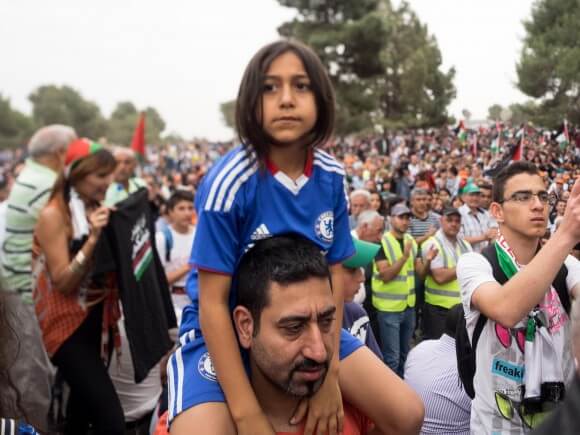
Tarek Elayan, a Palestinian who holds Israeli citizenship, explained, “For several days, we’ve seen all the flags of Israel. Suddenly we saw all these flags of Palestine in one place. Maybe it was a little provocative for the Israelis, but we like it. “
Tarek Barki continued:
“Jerusalem the last couple of days, you see the flags everywhere. I also went to Nablus yesterday. Inside the West Bank, every junction near the settlements, the flags are everywhere. Sometimes near the villages in the West Bank. It was so provoking. Today, after Lubya, I saw thousands of Palestinian flags, I felt like I’m really comfortable now.”
I asked Tarek Barki for his thoughts on the confiscation of Palestinian flags. He replied, “They claim democracy everywhere, but they take a flag from a little kid. Are you afraid of our flag? You don’t want us to exist here? But no, we stay here. It’s a big lie.”
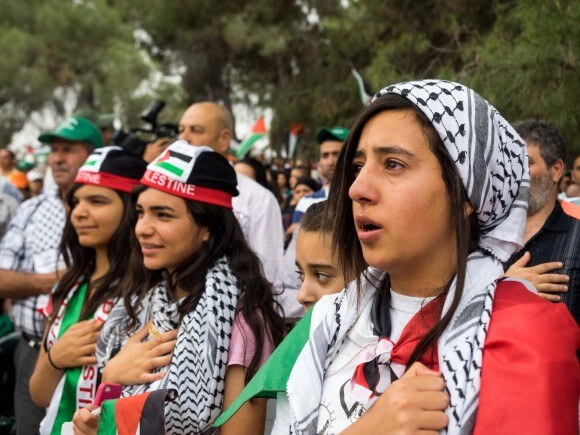
Thawra Abukhdeir, 19, a nursing student from Jerusalem, explained the absurdity of Israeli Independence Day: “Independence from what? From whom? They were in diaspora and came to my country, declared themselves free and took our freedom!”
As negotiations again prove to be fruitless, it is clear that Palestinians inside Israel will not forget their past. The massive turnout for Nakba Day demonstrates that grassroots movements will continue to commemorate the expulsion of the refugees and work for their return.
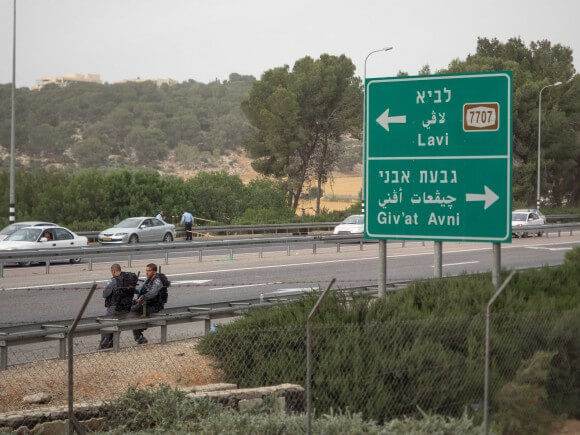


the photo of the girl w/the fist over her heart, wow. thank you dan.
The crowd of Jews who gathered to taunt the Palestinians are not different than the Nazis who marched in Skokie, Ill.
Bravo
Nakba Day has also very special for me since 3 years back. I was at Maroun al-Ras among 100,000 mostly Palestinians gathered there. I had left home at 4 am to reach the site by 6 am to be at the front of the crowd. Getting there was also thrilling as along the last half of the 140 km trip, Palestinians had installed for the event on trees and lampposts in the various villages, hand-made directional arrow signs on the road indicating the way to Palestine. Once there, it became very emotional for Palestinians that had made it into the plaza because for many that had been born in the camps, it was the first time they could actually see Palestine because the gathering site was on a high hill overlooking the lush-green occupied land clearly visible below as far as the eye could see.
The day’s ceremonies with speeches and Palestinian songs were being conducted in a plaza high on a hill that had a giant screen about 2 km from the fence. Just before noon about an hour into the ceremonies, the giant screen started relaying Israel’s channel 10’s live coverage of the IDF soldiers and tanks from the Israeli side of the fence. It’s when these close-up images of the soldiers were seen on the giant screen that hundreds took to running down the hill towards the fence and I ran with them. I was probably lucky because my tired legs from the tricky climb down the hill couldn’t get me nearer than the last kilometer to reach the fence. Even more people started rushing down the hill and pushing their way through the army’s barricade when the giant screen started showing close-up pictures of people getting shot at the fence. The day turned ugly as the Israelis started shooting at the unarmed people trying to pin their Palestinian flags on the barbed wire fence. A couple succeed before getting shot. 10 people were killed and 120 were injured by IDF gunfire. The sight of the injured being carried up the hill by the people to reach the ambulances that couldn’t get down the rocky hill along with the wailing of the sirens was heartbreaking. It was evident that those that rushed to the fence simply wanted to put up their flags on it as on the other side of the barbed wire that no one could climb in any event, there were 2 tanks and 3 personnel carriers with hundreds of soldiers with guns aimed at the fence. It was a memorably sad day. The video shows the plaza, the hill and the fence.
https://www.youtube.com/watch?v=SqtlZFVGC_0
So thrilling to see Palestinians here. Lubia of course is the village for which the Jewish National Fund received donations from South African Jews to plant the “South Africa Forest” in the land above the rubble of demolished homes.. A common JNF scenario, the forest and the new name were meant to extinguish both the Israeli crime and Palestinian memory.
The ethnic cleansing of Lubia and the cover-up have now been brilliantly documented in the 2013 film, “The Village under the Forest”. It also records the shock of at least one South African donor when she sees how money her family put into the blue JNF boxes was spent. The film can be rented at jman.tv until it is released.